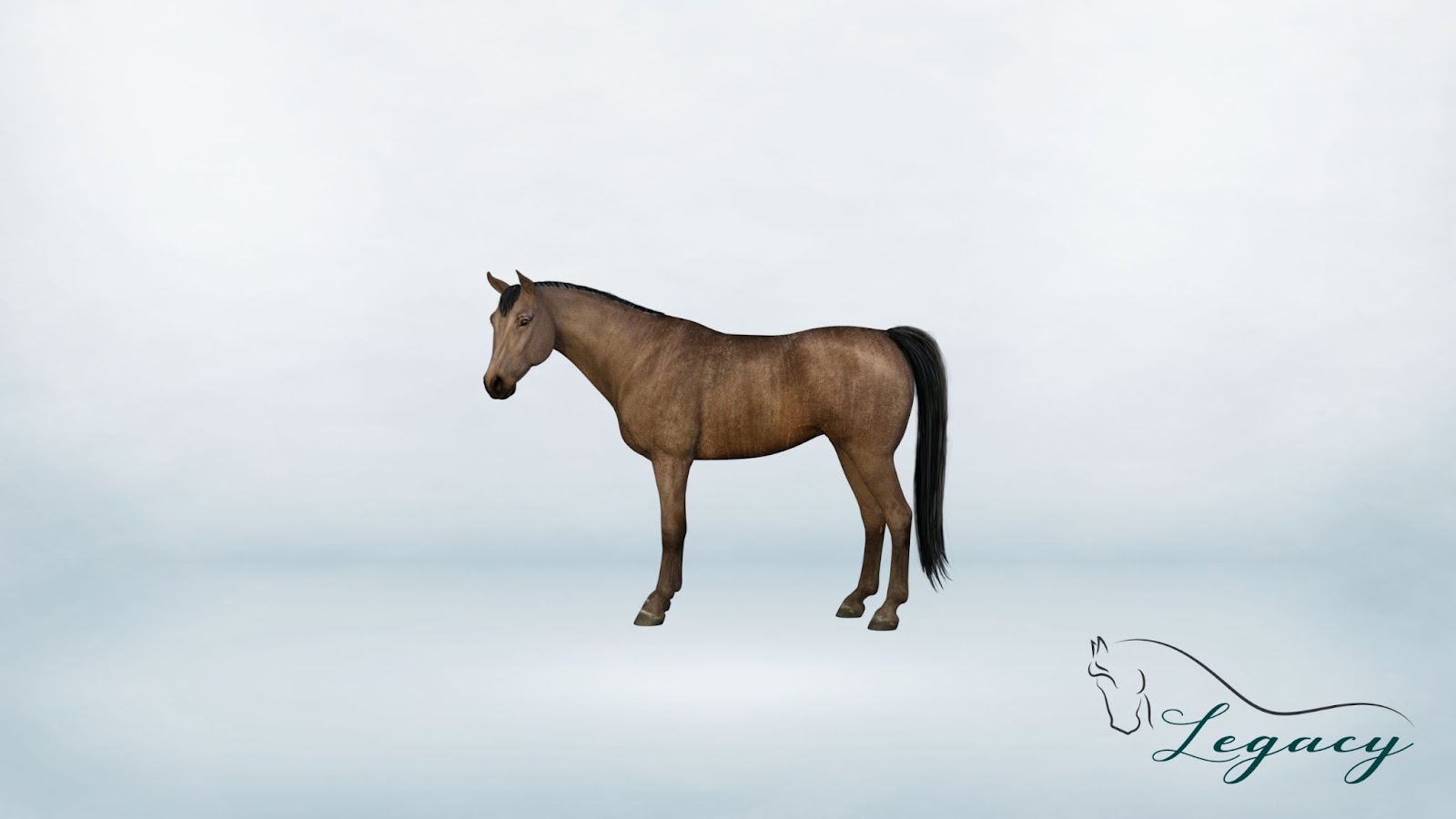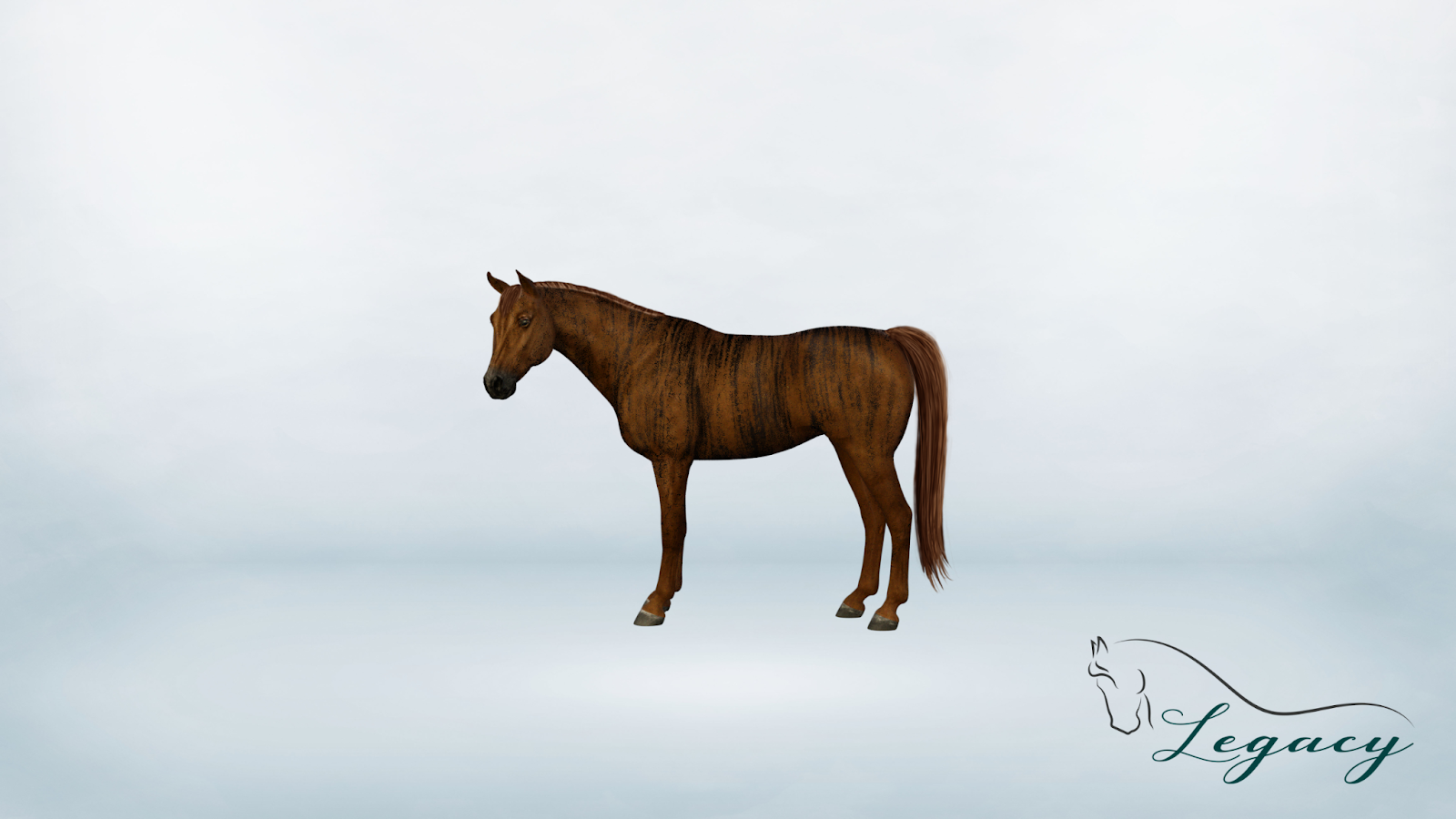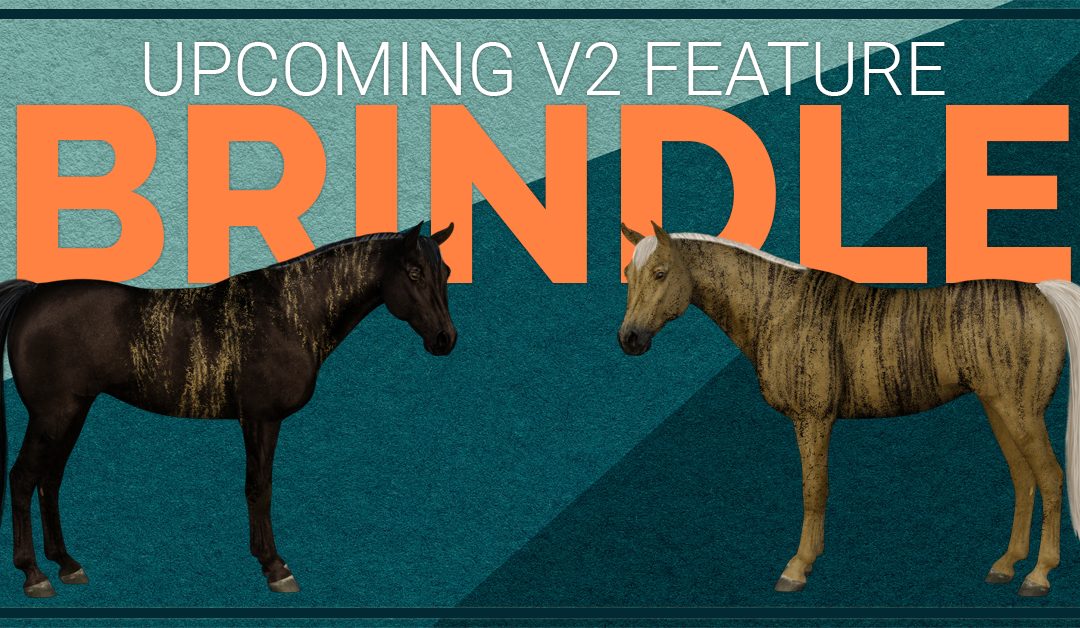Some of you have asked about this before, and we are excited to announce that we will be adding not one but TWO types of brindle to the game in V2!
Genetic Brindle
The first type is the genetic version of brindle.
Yes, there is a gene that can produce the brindle ‘coloration.’ Except, it’s not really a color. You see, this gene actually changes the texture of the hair, resulting in a stripey appearance on the horse’s flank, like this:

The gene that causes this is known (MBTPS2), and it is testable, so there will be tests for it in the game as well. What’s really cool about it though is it is an X-linked gene (meaning it is found on the X chromosome), and the pattern is only visible on heterozygous horses. Why? Buckle up, and let’s dive into the science.
So why does it only show on a heterozygous horse? It’s not exactly known for this gene, but it is likely because of what is called ‘X-inactivation’. You see, somatic cells (any cell except the gametes), can only handle having one X chromosome ‘active’. For males, this isn’t a problem, because they only have one X anyway, so their cells do not go through X-inactivation (aside from Klinefelter syndrome, but that’s a whole other thing). Females though, have two X chromosomes, so the cells must inactivate one X to function normally. Normally which X-chromosome gets inactivated is random ( if you are familiar with cat colors, that’s why calico cats have patches!). But, it appears that in horses the Xs are possibly inactivated in a less random manner, and actually in stripes, which makes the brindle pattern.
What does this mean for breeding BR1 brindle horses in the game? Well, remember, it is only expressed in heterozygotes, and only females have two X chromosomes, while males have one. This means, much like calicos cats, only females will show this kind of brindle! Stallions can of course carry the allele, but it won’t produce a striping pattern on him. But, if you breed a brindle-carrying stud to a non-brindle mare, then all his daughters will be brindle!
If you want to read more about the research behind this gene, you can find the scientific article here: https://www.ncbi.nlm.nih.gov/pmc/articles/PMC5015953/
And yes, custom imports will have an option to select brindle in V2.
Chimera Brindle
The other type of brindle will be on chimeras.
That’s right, there will be chimeras in V2! Chimeras are a single individual (in this case a horse) which contains cells or tissues from two or more horses. A foal might be born a chimera if they had a twin while in utero, but the twin died and some of its cells happened to get mixed in with the surviving twins’. Fascinating, right? 🙂
How will you know your foal is a chimera? They will have patches of a different color on their body where the other foal’s cells were absorbed. Like this chestnut horse with black stripes:

You might wonder though, what happens if you breed to a horse that is a chimera, since they have two horses’ cells? Well, in real life, there is a chance that the germ cells (the cells which reproduce) are chimeric. If that is the case, the horse can more or less reproduce as if they were two horses. Some foals would get sire A’s genetics, some would get sire B’s, basically. But, if the chimera didn’t get germ cells from their twin, and instead just got somatic cells, then they only reproduce from their own genetics. So for them, they just look cool, and it has no effect on the foals. For the game, chimeras will only be somatic, so the brindle on them will just be cosmetic and not inherited.
We’re thrilled to bring these two stunning variations of brindle to V2, adding even more depth and diversity to your herds. Whether your horse inherits brindle through genetics or as a rare chimera, we can’t wait to see how these unique coats transform your ranches. Stay tuned for more updates as we continue to expand the possibilities in Legacy Horse Game

